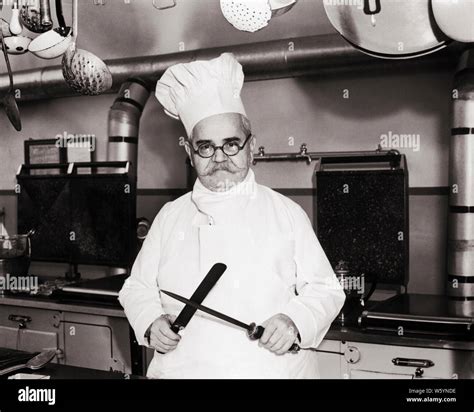
A culinary experiment involving a century-old jar of honey took an unexpected turn when a chef experienced numbness after tasting the vintage sweet treat, highlighting both the potential risks and rewards of exploring aged foods.
Vintage Honey High: Chef’s 1920s Sweet Treat Turns Numb Nightmare
A chef’s daring taste test of honey dating back to the 1920s resulted in an alarming numbness, underscoring the unpredictable nature of consuming extremely old food items. The incident occurred during a broader exploration of vintage foods, where culinary professionals examined and sampled various preserved goods from decades past. While some items retained palatable qualities, the aged honey presented unforeseen consequences, prompting a discussion about food preservation, potential toxins, and the limits of culinary curiosity.
The experiment, aimed at understanding the longevity and flavor profiles of aged foods, included a range of items from canned goods to preserved meats. However, the honey, sourced from a private collection, stood out due to its age and seemingly pristine condition. According to the source, the honey appeared to be well-preserved, exhibiting a rich color and viscous texture, leading the chef to believe it might still be safe for consumption.
“We approached it with caution, of course,” the chef explained, noting the initial optimism surrounding the honey. “It looked and smelled surprisingly good, which is why I decided to try a small amount.”
The initial taste was reportedly pleasant, with the chef describing a complex sweetness that hinted at floral notes. However, within minutes, a tingling sensation developed on the tongue, quickly escalating into full-blown numbness that extended throughout the mouth.
“It was quite alarming,” the chef admitted. “The numbness was unexpected and quite intense. It lasted for several hours, and it definitely made me rethink the whole concept of tasting such old food.”
Medical professionals were consulted following the incident, though no serious health complications arose. The primary concern revolved around potential contaminants or naturally occurring toxins that may have developed in the honey over time. While honey is known for its preservative properties due to its low water content and high sugar concentration, its longevity is not indefinite, and changes in chemical composition can occur over decades.
“Honey is generally resistant to spoilage, but it’s not immune,” explained a food safety expert consulted for this article. “Over time, it can absorb moisture, which can lead to fermentation or the growth of microorganisms. Additionally, naturally occurring compounds in honey can break down or react to form new substances, some of which may be toxic.”
The incident serves as a cautionary tale for those interested in exploring vintage foods. While the allure of tasting history is undeniable, the potential risks associated with consuming aged items should not be underestimated. Proper research, careful examination, and expert consultation are essential before attempting to ingest anything that has been stored for an extended period.
Further analysis of the honey is underway to determine the exact cause of the numbness. Scientists are examining the sample for the presence of botulinum spores, heavy metals, and other potential contaminants. They are also investigating the possibility that the honey may have contained grayanotoxins, naturally occurring compounds found in some types of honey derived from rhododendron nectar. Grayanotoxins are known to cause neurological symptoms, including numbness, dizziness, and even paralysis.
The experience hasn’t deterred the chef from exploring vintage foods altogether, but it has instilled a greater sense of caution and respect for the potential dangers involved. Future experiments will involve more rigorous testing and analysis before any tasting takes place.
“We’ve learned a valuable lesson,” the chef concluded. “Vintage food can be fascinating, but it’s not something to be taken lightly. Safety has to be the top priority.”
The Science of Aged Honey
Honey’s remarkable shelf life is attributed to several factors, primarily its low water content, high sugar concentration, and the presence of antimicrobial compounds like hydrogen peroxide. These properties inhibit the growth of bacteria and other microorganisms that typically cause spoilage. However, over extended periods, chemical changes can occur that affect the honey’s quality and safety.
One potential issue is the Maillard reaction, a chemical reaction between amino acids and reducing sugars that occurs during heating or storage. The Maillard reaction can lead to the browning of honey and the formation of new flavor compounds, some of which may be undesirable.
Another concern is the absorption of moisture from the environment. While honey is hygroscopic (meaning it readily absorbs moisture), excessive moisture can dilute the sugar concentration and create a more favorable environment for microbial growth. Fermentation, caused by yeasts, can occur, resulting in the production of alcohol and carbon dioxide.
Furthermore, honey can accumulate contaminants over time, either from the environment or from the processing and storage equipment. Heavy metals, pesticides, and other pollutants can leach into the honey and pose a health risk.
The presence of grayanotoxins is another potential hazard, particularly in honey derived from rhododendron nectar. These toxins can cause a range of neurological symptoms, including numbness, dizziness, weakness, sweating, nausea, vomiting, and blurred vision. The severity of symptoms depends on the concentration of grayanotoxins in the honey and the amount consumed.
In the case of the 1920s honey, it is possible that a combination of factors contributed to the chef’s numbness. The honey may have absorbed moisture, undergone chemical changes, or accumulated contaminants over the past century. Further analysis is needed to determine the exact cause.
Expert Opinions and Food Safety Recommendations
Food safety experts emphasize the importance of exercising caution when consuming aged foods. While some items may remain safe for consumption after many years, others can pose significant health risks.
“The general rule is, when in doubt, throw it out,” advises a food safety specialist. “It’s better to be safe than sorry when it comes to food that has been stored for an extended period. If you’re unsure about the safety of an item, it’s best to discard it.”
When considering tasting vintage foods, experts recommend the following precautions:
- Research the item thoroughly: Before consuming any aged food, research its potential risks and benefits. Look for information on its proper storage, common spoilage patterns, and potential contaminants.
- Examine the item carefully: Inspect the food for signs of spoilage, such as discoloration, mold growth, off odors, or unusual textures. If anything seems amiss, do not consume the item.
- Consult with experts: Seek advice from food safety experts, historians, or culinary professionals who have experience with vintage foods. They can provide valuable insights and guidance.
- Start with small amounts: If you decide to taste an aged food, start with a very small amount to assess your reaction. Pay close attention to any unusual symptoms, such as numbness, tingling, nausea, or dizziness.
- Have medical assistance available: If you experience any adverse reactions after consuming aged food, seek medical attention immediately.
The Allure of Vintage Foods: A Culinary Time Capsule
Despite the potential risks, the allure of vintage foods remains strong for many culinary enthusiasts. The opportunity to taste flavors from the past, to experience a tangible connection to history, is a powerful draw.
Vintage foods can offer insights into the culinary practices, ingredients, and preservation techniques of previous generations. They can also provide a unique sensory experience, allowing us to appreciate the evolution of flavors and food culture.
However, it is important to approach vintage foods with a healthy dose of skepticism and respect. They are not simply edible artifacts; they are complex biological systems that have undergone countless changes over time. Consuming them requires careful consideration, thorough research, and a willingness to accept the potential risks.
The Future of Food Exploration
The incident with the 1920s honey highlights the importance of responsible food exploration. As our understanding of food science and preservation techniques advances, we can continue to push the boundaries of culinary innovation. However, we must always prioritize safety and ethical considerations.
Future experiments with vintage foods should involve rigorous testing and analysis, using advanced technologies to identify potential contaminants and assess the nutritional value of aged items. Collaboration between chefs, scientists, historians, and food safety experts is essential to ensure that these explorations are conducted responsibly and ethically.
Ultimately, the goal is to learn from the past, to appreciate the rich history of food, and to develop innovative solutions for ensuring food security and sustainability in the future. The tasting of the 1920’s honey serves as a stark reminder of the unseen dangers when playing with very old food items and the requirement for more rigorous scientific testing and examination.
Honey: More than Just a Sweetener
Honey, in its natural state, is a remarkable substance with a long and fascinating history. Used for centuries as a food, medicine, and preservative, honey has played a significant role in human culture and civilization.
Ancient Egyptians used honey to embalm their dead, recognizing its antimicrobial properties. The Greeks and Romans valued honey for its medicinal properties, using it to treat wounds, burns, and other ailments. In traditional medicine systems around the world, honey is still used to promote healing and boost immunity.
Today, honey is widely recognized for its health benefits, including its antioxidant, anti-inflammatory, and antibacterial properties. It is also a good source of energy, providing a natural alternative to refined sugar.
However, it is important to choose honey carefully, as not all honey is created equal. Raw, unfiltered honey retains more of its natural enzymes, antioxidants, and other beneficial compounds. Processed honey, on the other hand, may be heated, filtered, and stripped of its nutrients.
FAQ Section
Q1: What caused the chef’s numbness after tasting the 1920s honey?
A1: The exact cause is still under investigation, but potential factors include the presence of botulinum spores, heavy metals, naturally occurring toxins like grayanotoxins (found in honey derived from rhododendron nectar), or other contaminants that may have accumulated in the honey over the past century. Chemical changes occurring over time could have also contributed.
Q2: Is it generally safe to eat very old honey?
A2: While honey has preservative properties and can last a long time, it’s not indefinitely safe. Over extended periods, honey can absorb moisture, ferment, accumulate contaminants, or undergo chemical changes that may render it unsafe for consumption. Caution is advised, and thorough examination and potential testing are recommended before consumption.
Q3: What are grayanotoxins, and how can they affect you?
A3: Grayanotoxins are naturally occurring toxins found in some types of honey, particularly those derived from rhododendron nectar. They can cause neurological symptoms, including numbness, dizziness, weakness, sweating, nausea, vomiting, blurred vision, and even paralysis. The severity depends on the concentration of the toxins and the amount of honey consumed.
Q4: What precautions should I take if I’m considering tasting vintage foods?
A4: If you’re considering tasting vintage foods, thoroughly research the item, examine it carefully for signs of spoilage, consult with experts (food safety professionals, historians, or chefs), start with very small amounts to assess your reaction, and have medical assistance available in case of adverse reactions. When in doubt, throw it out.
Q5: How does honey’s age affect its properties and safety?
A5: As honey ages, it can undergo several changes. It may absorb moisture, which can lead to fermentation or microbial growth. The Maillard reaction can cause browning and the formation of new flavor compounds. It can also accumulate contaminants from the environment or storage equipment. While honey is naturally resistant to spoilage, these changes can affect its quality, taste, and safety over very long periods.









